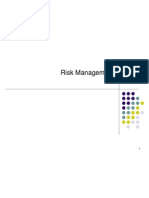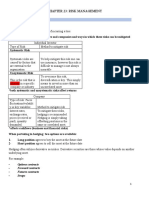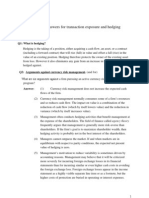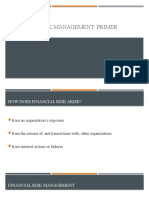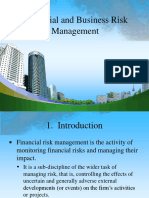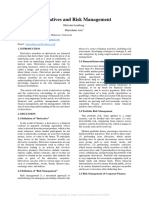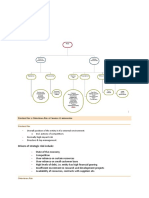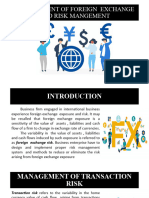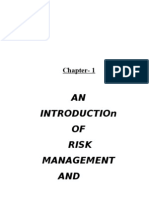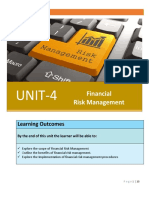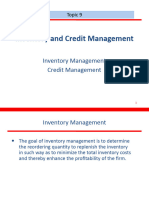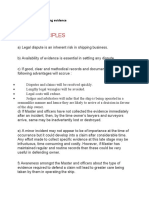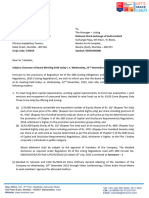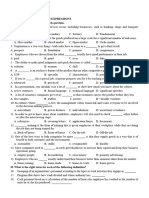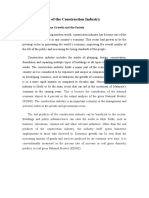0% found this document useful (0 votes)
90 views8 pagesIntroduction To Hedging (Notes)
This document discusses hedging and risk management. It covers various types of financial risk like interest rate risk, commodity price risk, foreign exchange risk, and credit risk. It then discusses reasons for managing risk such as increasing debt capacity, maintaining capital budgets, avoiding financial distress, and reducing costs. Methods of managing risk are also presented, including using interest rate futures, forward/futures contracts, and foreign currency transactions. Forward and futures contracts are explained in detail as a key tool for hedging commodity price risk.
Uploaded by
t6s1z7Copyright
© © All Rights Reserved
We take content rights seriously. If you suspect this is your content, claim it here.
Available Formats
Download as DOCX, PDF, TXT or read online on Scribd
0% found this document useful (0 votes)
90 views8 pagesIntroduction To Hedging (Notes)
This document discusses hedging and risk management. It covers various types of financial risk like interest rate risk, commodity price risk, foreign exchange risk, and credit risk. It then discusses reasons for managing risk such as increasing debt capacity, maintaining capital budgets, avoiding financial distress, and reducing costs. Methods of managing risk are also presented, including using interest rate futures, forward/futures contracts, and foreign currency transactions. Forward and futures contracts are explained in detail as a key tool for hedging commodity price risk.
Uploaded by
t6s1z7Copyright
© © All Rights Reserved
We take content rights seriously. If you suspect this is your content, claim it here.
Available Formats
Download as DOCX, PDF, TXT or read online on Scribd
/ 8

